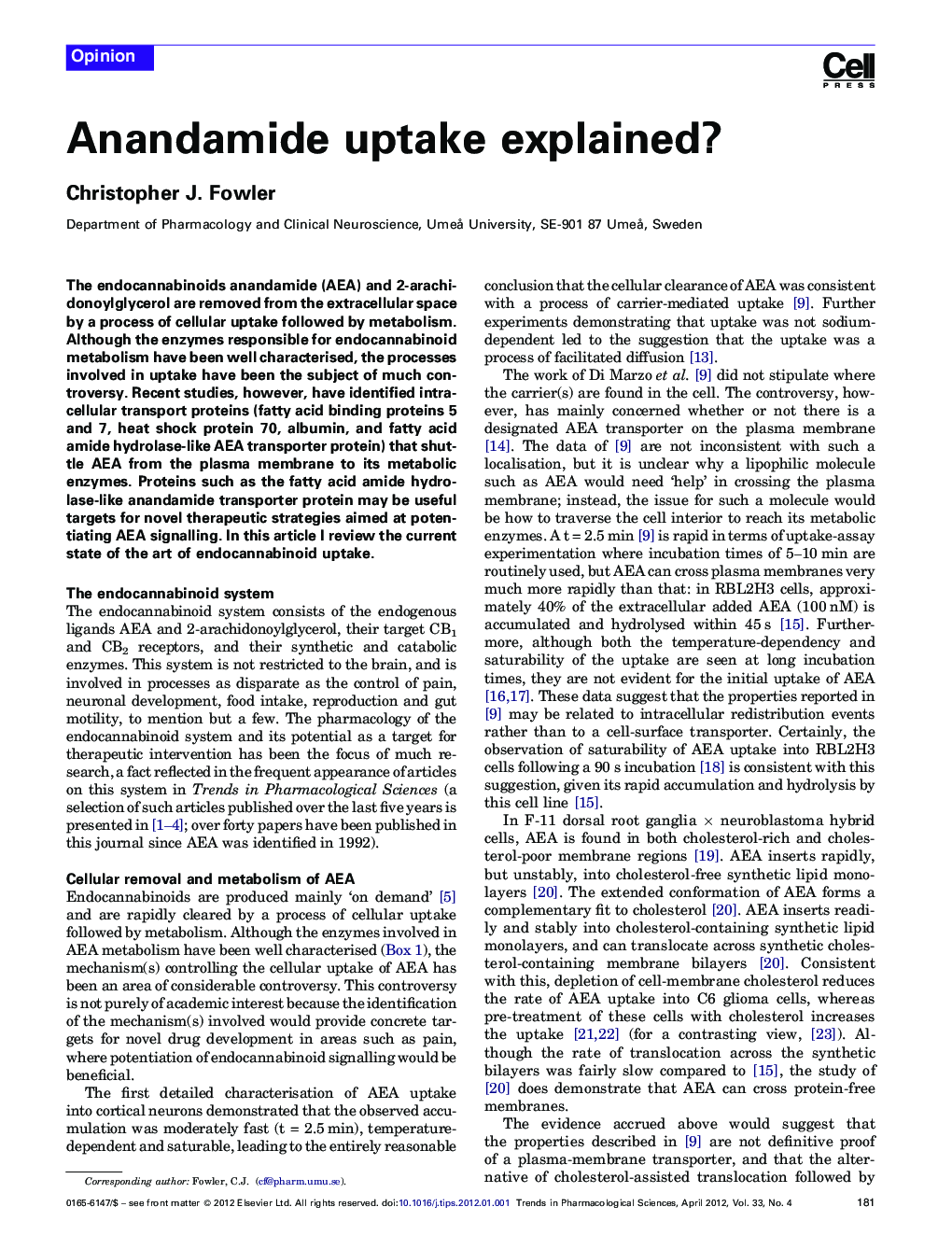| Article ID | Journal | Published Year | Pages | File Type |
|---|---|---|---|---|
| 2572923 | Trends in Pharmacological Sciences | 2012 | 5 Pages |
The endocannabinoids anandamide (AEA) and 2-arachidonoylglycerol are removed from the extracellular space by a process of cellular uptake followed by metabolism. Although the enzymes responsible for endocannabinoid metabolism have been well characterised, the processes involved in uptake have been the subject of much controversy. Recent studies, however, have identified intracellular transport proteins (fatty acid binding proteins 5 and 7, heat shock protein 70, albumin, and fatty acid amide hydrolase-like AEA transporter protein) that shuttle AEA from the plasma membrane to its metabolic enzymes. Proteins such as the fatty acid amide hydrolase-like anandamide transporter protein may be useful targets for novel therapeutic strategies aimed at potentiating AEA signalling. In this article I review the current state of the art of endocannabinoid uptake.
